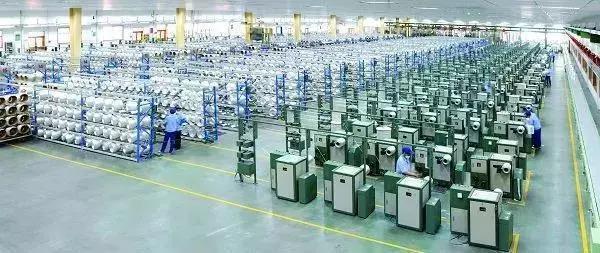Glass fiber was born in the 1930s. It is a kind of inorganic non-metallic material produced by pyrophyllite, quartz sand, limestone, dolomite, calcite, brucite, boric acid, soda ash and other chemical raw materials. It has light weight, high strength, high and low temperature resistance, corrosion resistance, heat insulation, flame retardant, sound absorption and electrical insulation. It is a kind of excellent functional material and structural material, which can replace steel, wood, cement and other building materials in a certain range.
Development status of glass fiber industry in China
It started in 1958 and developed rapidly after 1980. In 2007, total output came first in the world. After nearly 60 years of development, China has become a truly large glass fiber industry. In the first year of the 13th Five-Year Plan, China’s glass fiber industry saw a 9.8% year-on-year increase in profits and 6.2% year-on-year increase in sales revenue. The industry has become stable and stable. Although the output ranks first in the world, there is a clear gap between domestic glass fiber industry and foreign countries in production technology, product value-added, industry standards and other aspects, and it has not yet reached the level of glass fiber power. The problems are as follows:
1. deep processing products lack of research and development, high-end products rely on foreign imports.
At present, China’s glass fiber export volume has far exceeded imports, but from the unit price point of view, the price of imported glass fiber and products is obviously higher than exports, indicating that China’s glass fiber industry technology is still lagging behind foreign countries. The quantity of glass fiber deep processing is only 37% of the world, the products are generally low-quality and cheap, the actual technical content is limited, and the high-end products are not competitive; from the perspective of import and export categories, the basic gap is not big, but the glass fiber is obviously more inclined to import, and the unit price of the import of this kind of glass fiber is almost twice the unit price of export, indicating that China is special for high-end products. The demand for fiberglass is still dependent on imports, and the industrial structure needs to be upgraded.
2. enterprises lack of innovation, homogenization of products, resulting in overcapacity.
Domestic glass fiber enterprises lack the sense of vertical innovation, focus on the development and sales of a single product, lack of supporting design services, it is easy to create a higher homogeneity situation. Leading enterprises in a market breakthrough, other enterprises on the rush, resulting in rapid expansion of market capacity, product quality uneven, price volatility, and soon form overcapacity. But for the potential application market, the enterprise is unwilling to spend too much energy and money on research and development, it is difficult to form the core competitiveness.
3. the intelligence level of production and logistics of small and medium-sized enterprises is low.
With the rapid development of China’s economy, enterprises are facing the pressure of energy, environmental protection and labor costs are rapidly rising, constantly testing the production and management level of enterprises. At the same time, western countries have returned to the real economy, low-end manufacturing to South Asia, Southeast Asia, Latin America, Eastern Europe and Africa and other developing countries and regions, high-end manufacturing is returning to the European Union, North America, Japan and other developed countries, China’s real industry is experiencing a sandwich effect. For the vast majority of glass fiber enterprises, production automation is only an island, has not yet connected the entire production process of enterprises, information management is mostly staying at the planning management level, not throughout the entire production, management, capital, logistics, service links, from intelligent manufacturing, intelligent factory requirements gap is very big.
As the trend of glass fiber industry shifting from Europe and America to Asia-Pacific, especially China, has become obvious, how to achieve the leap from quantity to quality depends on the continuous upgrading of production and technology. The industry should keep up with the pace of national development, accelerate the integration of industrialization and industrialization and explore the implementation of industrial intelligence, through automated and intelligent production and logistics network, to help enterprises to achieve subversive innovation and development.
In addition, on the one hand, we should continue to eliminate backward technology and equipment, speed up the manufacture of automated production equipment, process control of industrial operations, production of high-grade raw and auxiliary materials and other technological processes, improve production efficiency, implement energy conservation and emission reduction; on the other hand, we should continue to innovate in product research and development, focusing on high-end areas. Stride forward and improve the core competitiveness of products.
Post time: Sep-17-2018



